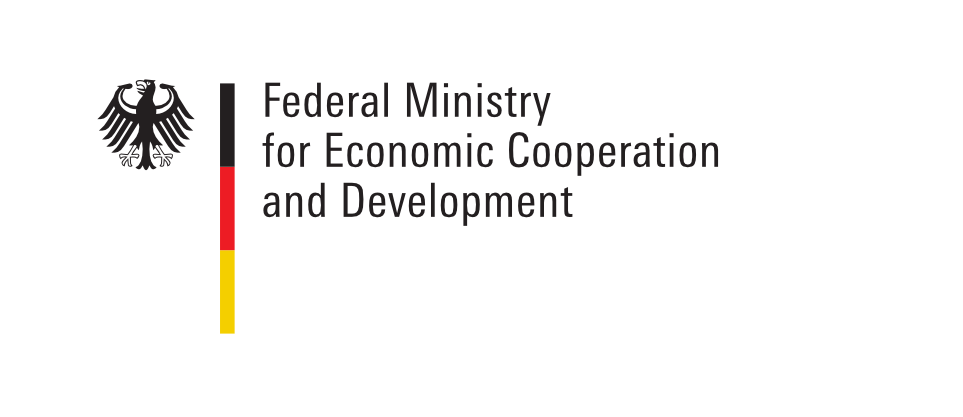- DE |
- EN
First steps towards the reuse of public buildings from the 1960s and 1970s
In September 2024, the learning process “2nd Hands on Public Buildings“ by Connective Cities began. For over a year, practitioners from municipalities and experts from the fields of urban planning, architecture and sustainable urban development exchange ideas about how buildings from the 1960s and 1970s can be sensibly reused or converted. They come from Germany, Kenya, Montenegro and Zambia as well as from Ukraine and the Palestinian territories and they are united by a common goal: not to immediately demolish and rebuild public buildings that no longer meet today's standards. Instead, to create new, sustainable usage concepts for the benefit of citizens through climate-friendly renovations. They were inspired by many good practical examples - from the House of Statistics in Berlin or the House of Revolution in Niksic in Montenegro.
Just four weeks after the dialogue event, some of the actors involved in the learning process had already begun to concretize the project ideas they had presented in Berlin. On October 30, they together with other interested parties came together virtually to learn more about and discuss the first steps for planning new uses.
The city administration of Lusaka in Zambia, for example, wants to carry out an inventory of the numerous community centers in the city. Many are housed in decades-old buildings that are in poor structural condition. An analysis now planned will show what structural advantages and disadvantages, as well as defects, the buildings have and how they are currently used. The results will serve as the basis for a strategy for future use. The idea is to house centers for early childhood development there in the long term.
The twin towns of Greifswald and Drohobych in Ukraine have also already taken a step forward: The Ukrainian town is planning to renovate 20 apartment buildings to make them more energy efficient and has already acquired external financial support for this project. The Greifswald city administration wants to support its twin town with technical expertise in making the buildings sustainable and usable in the long term.
Practical example: a cooperative workshop process brings initial insights
Prof. Amandus Samsøe Sattler, co-owner of ensømble Studio Architektur, Berlin, and President of the German Sustainable Building Council (DGNB), reported on a cooperative workshop process that was used to clarify options for the subsequent use of a parking garage in Bremen.
The Katharinenklosterhof car park, built in the 1970s, is centrally located in Bremen's city center. Due to the changing mobility patterns of the population, the building is no longer economically viable as a car park in the long term. As a result, a workshop process was carried out to investigate how the building could be converted so that it would be used for a new purpose and meet sustainability criteria. The municipal owner BREPARK, which manages the parking space in the city, two architectural firms and the "Sustainable City Centers and Centers" project were involved in the process.
The building was analyzed with regard to the load-bearing capacity of the structure, ensuring fire protection and the structural substance, and it was calculated whether renovation and new use would make economic sense. One of the original ideas to accommodate a university lecture hall in the parking garage failed due to unsuitable structural structures, among other things. For example, it is not possible to implement the prescribed escape routes. The designs, which also provide for living space in the attractive inner-city location, always took into account how much weight the building could bear. An atrium would, for example, lead to weight relief. A new use of the existing building refines the design of the functional parking garage facades, integrates them into the district on a human scale and thus conveys a new narrative of sustainability, said Prof. Amandus Samsøe Sattler. The construction costs for the designs developed were roughly estimated. Now the city of Bremen must decide what to do next.
“We investigated: What can the building achieve without being overwhelmed?
What use would be appropriate and could help revitalize the inner city through the building?"
Prof. Amandus Samsøe Sattler
Synergy effects with other Connective Cities processes
Connective Cities GIZ offers additional learning processes and events that are closely linked to the reuse of buildings from the 1960s and 1970s. Interested actors can use valuable synergies here:
The working group on 'Sustainable and Affordable Housing in Sub-Saharan Africa started its collaboration in June 2024. It brings together 13 municipalities, as well as research institutes and national institutions, who exchange ideas on the need for integrated planning, financing models, affordable and sustainable building materials and the expansion of social housing initiatives. The key question for municipalities here is how they can contribute to the creation of affordable housing. The reuse of public buildings can play an important role here.
The agile format "Renewable energy options at the municipal level" serves as a professional exchange between 32 municipalities from sub-Saharan Africa on the increased use of renewable energies. Tunisia, Senegal, Kenya, Uganda, Malawi, Romania and Germany are currently involved. Municipal solutions are being discussed, such as how photovoltaics can be used to heat and cool buildings. There is also an intensive exchange on local power grids, e-mobility and the use of solar energy for street lighting. "Sustainable energy concepts are an important factor when planning the subsequent use of public buildings. After all, they should be as climate-friendly as possible," said Moses Manuve, regional coordinator at Connective Cities for sub-Saharan Africa.
Virtual cloud offers forum for exchange and information
For the learning process, Connective Cities has set up an virtual cloud where the actors involved present, among other things, good practice examples and project ideas. There is also a board on which interested parties can note which topics they need tips or support on and, above all, what they can offer support for themselves. "We are making this space available so that a lively and, above all, productive international experts networks can emerge in the coming months," says Marcella Sobisch, project coordinator at Connective Cities. The virtual space is password-protected, but access can be requested at any time.
Key Takeaways
The participants took away these lessons from the event, which they intend to use in their projects for the reuse of public buildings from the 1960s and 1970s:
-
Planning for the subsequent use of a building should always begin with a review of the building structure, an investigation of the building's "grey energy", an analysis of possible uses and a cost-effectiveness assessment. Building regulations must also be taken into account from the outset.
-
Public-private partnerships (PPPs) are often entered into for the subsequent use of public buildings. It is helpful to develop guidelines for such cooperations.
-
For sustainable reuse, high energy efficiency standards are a must.
-
The planning and implementation of subsequent use requires technical expertise, also with regard to the use of sustainable materials and cooling options.








